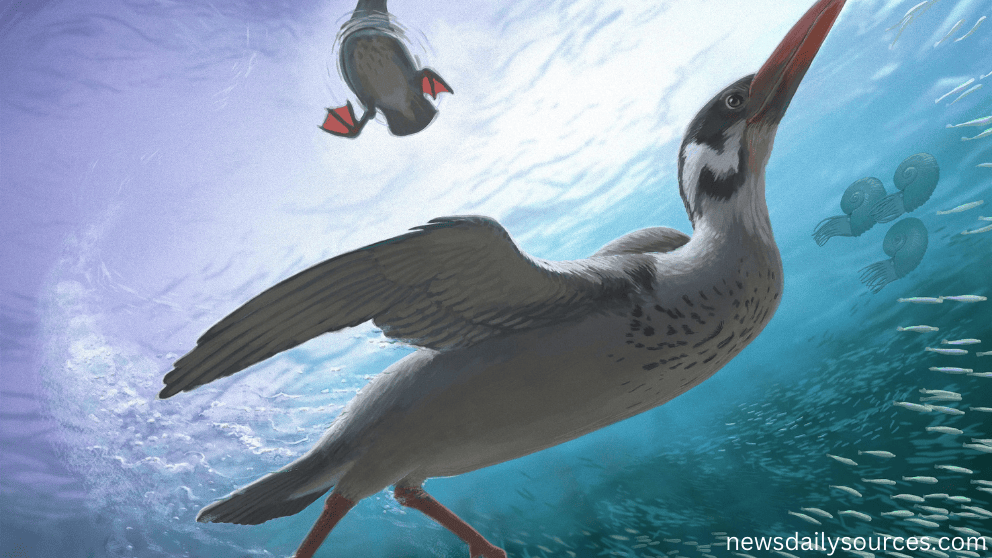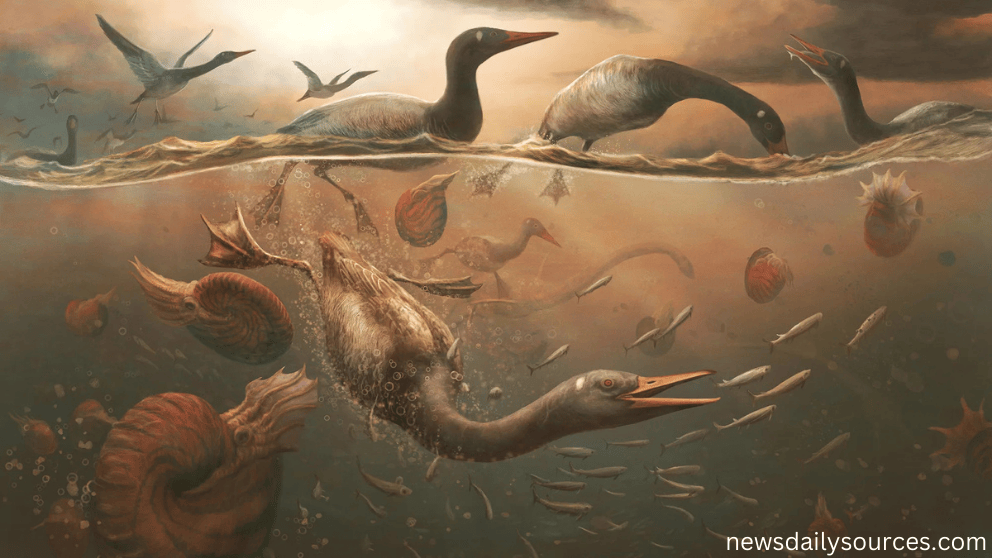The discovery that Earth’s first waterfowl may have lived in Antarctica 69 million years ago has sparked scientific interest worldwide. Waterfowl, which include ducks, geese, and swans, have evolved into some of the most recognizable birds on the planet. However, their ancient origins in the extreme conditions of Antarctica challenge everything scientists once believed about their evolutionary history.
This article explores the fascinating findings that suggest Antarctica may have been a vital habitat for early waterfowl. It uncovers how these birds thrived in a harsh, frigid environment millions of years ago. We will delve into the implications of this discovery, the fossil evidence supporting it, and the broader understanding of prehistoric life that it offers.
The Discovery – Waterfowl in Antarctica 69 Million Years Ago
In a groundbreaking study, paleontologists have uncovered compelling evidence suggesting that waterfowl existed in Antarctica around 69 million years ago during the Late Cretaceous period. This discovery, based on fossilized remains, reveals that these birds were far more adaptable than previously thought.
Fossil Evidence Supporting the Theory
The fossils that led to this discovery were found in the rocky sediments of Antarctica’s ancient coastline. These sediments date back to a time when Antarctica was much warmer than today and supported a range of life forms, including plants and animals. The preserved remains of early waterfowl are part of a significant find that has shifted scientists’ understanding of the region’s prehistoric ecosystem.
Scientists discovered the remains of these birds in sedimentary layers that date back to the Cretaceous period, a time when dinosaurs roamed the Earth. The fossils were identified as early waterfowl species, suggesting that these birds had already developed the unique features required for life in water, including webbed feet and specialized beaks, millions of years before they appeared in other parts of the world.
The Importance of Antarctica in Waterfowl Evolution
Antarctica’s role as the home of Earth’s first waterfowl is groundbreaking because it challenges the conventional understanding of where waterfowl first emerged. Prior to this discovery, it was believed that waterfowl evolved in more temperate climates. However, evidence suggests that these birds may have developed in the extreme conditions of a much warmer, prehistoric Antarctica.
The Climate of Antarctica 69 Million Years Ago
To understand why early waterfowl thrived in Antarctica, it’s essential to consider the climate during the Late Cretaceous period. Unlike today, when Antarctica is an icy, desolate land, the region was much warmer 69 million years ago. During this time, the Earth experienced a period of global warmth known as the “Cretaceous greenhouse.”
Warm Conditions for Life to Flourish
The Cretaceous greenhouse period saw higher concentrations of carbon dioxide in the atmosphere, leading to a much warmer climate globally. This allowed Antarctica to support lush vegetation and a variety of animal species, including early ancestors of modern waterfowl. The region’s temperate climate would have provided the necessary resources for waterfowl to survive, including water bodies for feeding and nesting.
A Habitat Unlike Today’s Antarctica
In contrast to the frigid and barren continent we know today, ancient Antarctica had a much more hospitable environment for both land and aquatic life. The presence of forests, freshwater lakes, and rivers suggests that the region was a thriving habitat for a diverse range of species. This climate allowed the first waterfowl to develop and adapt to the conditions they encountered.
The Evolutionary Significance of Waterfowl in Antarctica
The discovery that waterfowl originated in Antarctica offers important insights into the evolution of modern birds. By studying the fossils and unique traits of these early waterfowl, scientists can trace the development of features crucial for survival in aquatic environments.
Early Waterfowl Adaptations
The first waterfowl in Antarctica likely had several key adaptations that helped them thrive in a watery habitat. These included webbed feet for efficient swimming, streamlined bodies for fast movement in the water, and specialized beaks for foraging. These features suggest that early waterfowl were already adapted to aquatic life long before they diversified into the species we see today.
The Link Between Dinosaurs and Birds
Waterfowl, like all birds, are descendants of dinosaurs. By studying the fossils of early waterfowl in Antarctica, paleontologists can better understand the transition from dinosaurs to modern birds. Many of the features found in these ancient waterfowl, such as their beaks and skeletal structures, resemble traits found in certain groups of theropod dinosaurs, offering further evidence of the connection between the two.
How Waterfowl Adapted to Extreme Environments
The ancient waterfowl in Antarctica provides an excellent case study of how animals adapt to extreme environments. The species that lived in this region had to overcome several challenges, from harsh weather conditions to competition for food.
Surviving in the Cold
While the climate in Antarctica during the Cretaceous was warmer than it is today, it was still an extreme environment for most life forms. Early waterfowl in the region likely had to develop specialized strategies to survive in these conditions, including migrating between different water bodies and developing insulation to protect themselves from cooler temperatures.
Foraging and Feeding Habits
Feeding would have been another challenge for early waterfowl. The birds would have had to adapt to foraging in a variety of environments, from freshwater lakes to marshes. Their specialized beaks, capable of filtering food from the water, would have allowed them to take advantage of a wide range of aquatic plants and small animals.
Implications for Modern Waterfowl and Conservation Efforts

Understanding the origins of waterfowl and their evolution in Antarctica provides valuable insight into their future. The lessons learned from the ancient waterfowl of Antarctica may help scientists better understand how modern waterfowl species might adapt to current environmental challenges, such as climate change and habitat loss.
Modern Waterfowl and Climate Change
Today, waterfowl face the challenges of a rapidly changing climate. Rising temperatures, altered weather patterns, and the destruction of wetlands are all threats to these birds. Studying the ways in which early waterfowl adapted to their environment can offer valuable lessons about how modern species can survive in a changing world.
Conservation Efforts for Waterfowl Species
As waterfowl continue to face environmental threats, conservation efforts are critical to ensuring their survival. Understanding the evolutionary history of these birds, including their origins in Antarctica, can inform conservation strategies aimed at protecting their habitats and promoting biodiversity.
Frequently Asked Questions (FAQs)
Why were waterfowl able to thrive in ancient Antarctica?
Ancient Antarctica had a warmer climate with forests and freshwater bodies, providing a hospitable environment for early waterfowl to thrive.
How do the fossilized remains of waterfowl support this discovery?
The fossils found in Antarctica show features typical of waterfowl, such as webbed feet and specialized beaks, indicating these birds lived in aquatic environments.
What was the climate of Antarctica 69 million years ago?
During the Late Cretaceous period, Antarctica experienced a much warmer climate with lush vegetation, unlike its icy environment today.
What adaptations did early waterfowl have?
Early waterfowl developed webbed feet for swimming, specialized beaks for foraging, and streamlined bodies for efficient movement in the water.
How did this discovery change our understanding of waterfowl evolution?
It challenges the belief that waterfowl evolved in temperate climates and suggests that Antarctica played a key role in the early development of these birds.
What does this discovery mean for the study of dinosaurs?
The discovery of early waterfowl highlights the connection between birds and dinosaurs, as waterfowl share certain traits with theropod dinosaurs.
How might modern waterfowl be affected by climate change?
Climate change poses threats to waterfowl, including habitat loss and changes in food availability. Understanding how early waterfowl adapted can inform conservation efforts.
What are the conservation implications of this discovery?
The study of ancient waterfowl can provide insights into how modern species can adapt to changing environments, helping shape conservation strategies for waterfowl.
Conclusion
The discovery that Antarctica was home to the Earth’s first waterfowl 69 million years ago offers a fascinating glimpse into the history of these remarkable birds. The fossil evidence and the ancient climate of Antarctica paint a picture of a world in which waterfowl thrived in an environment that was vastly different from the one we know today.
As we continue to study these ancient creatures, we gain a deeper understanding of the evolution of modern birds, the adaptability of life on Earth, and the ways in which animals can survive and thrive in extreme conditions. The legacy of Antarctica’s first waterfowl reminds us of the resilience of life and the incredible capacity for adaptation that has allowed species to endure for millions of years.

